Understanding Funnels and Their Analysis #
What is a Funnel? #
A funnel is a series of steps that a customer or lead takes through your website, application, or marketing campaign. It is essentially a visualization of the customer journey, starting from the first point of contact to the final conversion point (such as a purchase or signup).
Why is Funnel Analysis Important? #
Analyzing funnels can help you understand customer behavior and identify where they drop off before completing a desired action. This allows you to optimize your funnel steps, improve user experience, and ultimately increase conversions and revenue.
Creating a New Funnel #
To create a new funnel in Retainly, follow these steps:
1. Go to the Sidebar > Analytics -> Funnels and click the “Create” button.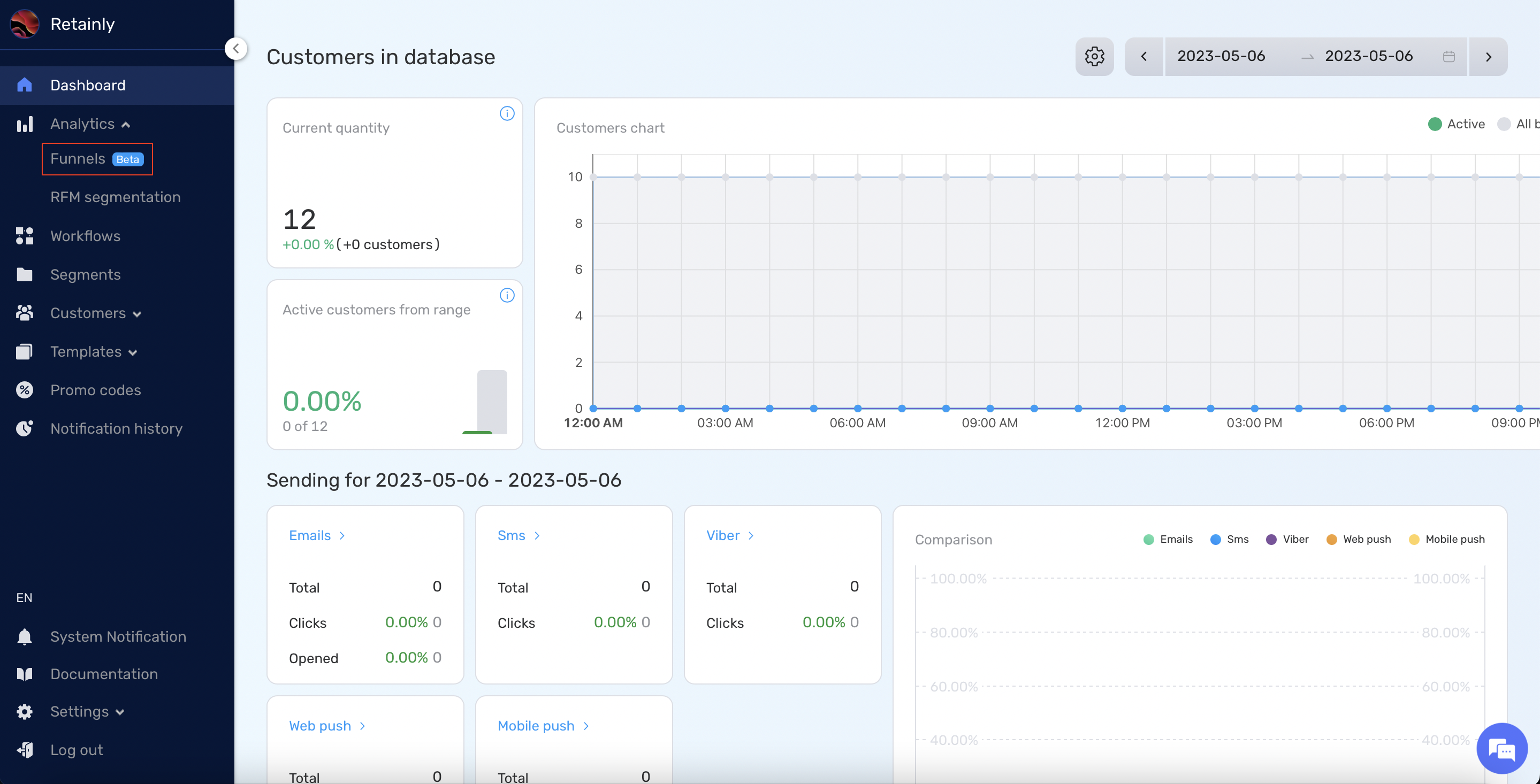
2. Add a name for your funnel.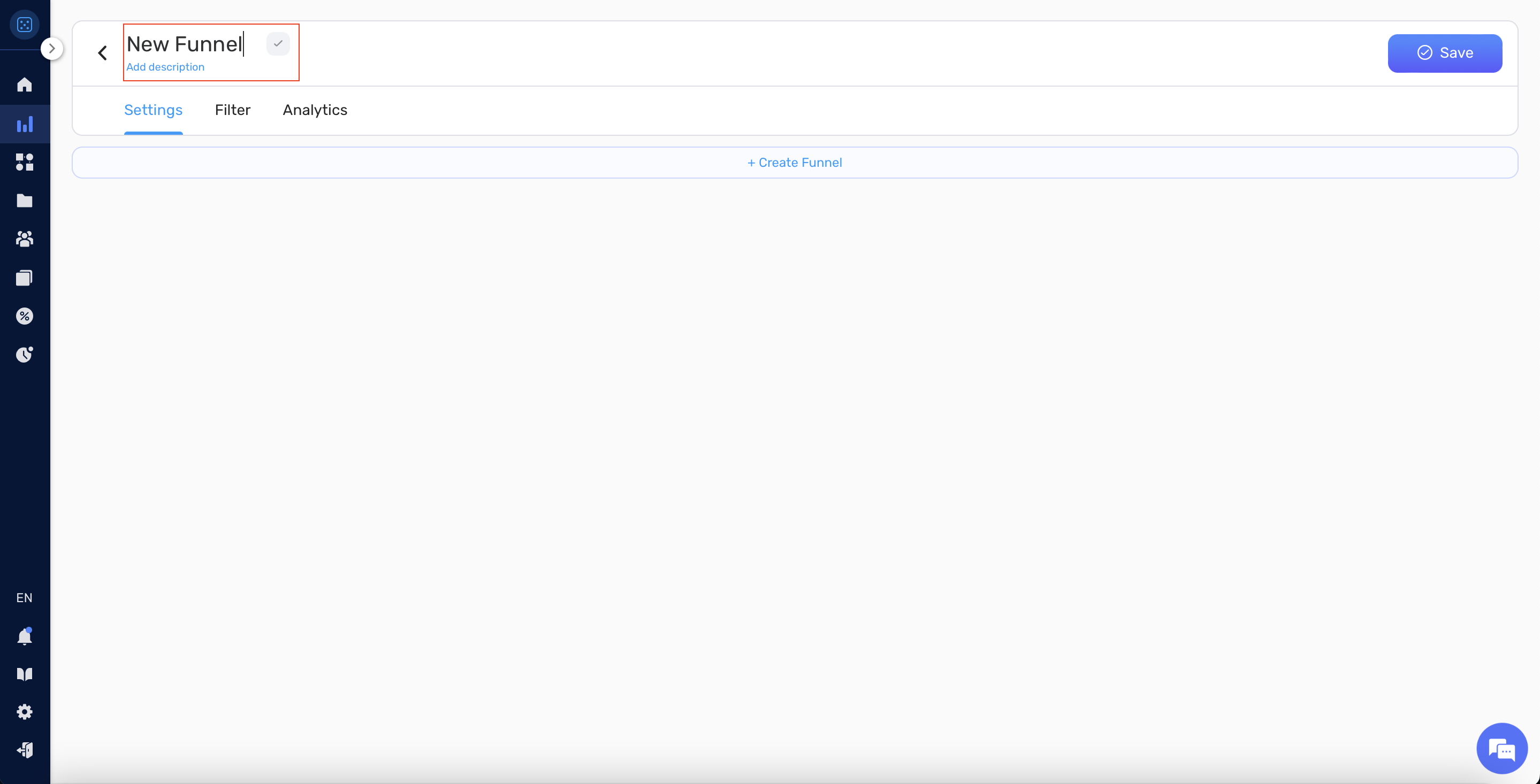
3. Press the “+ Create Funnel” button to add an event or array query as the first step in your funnel.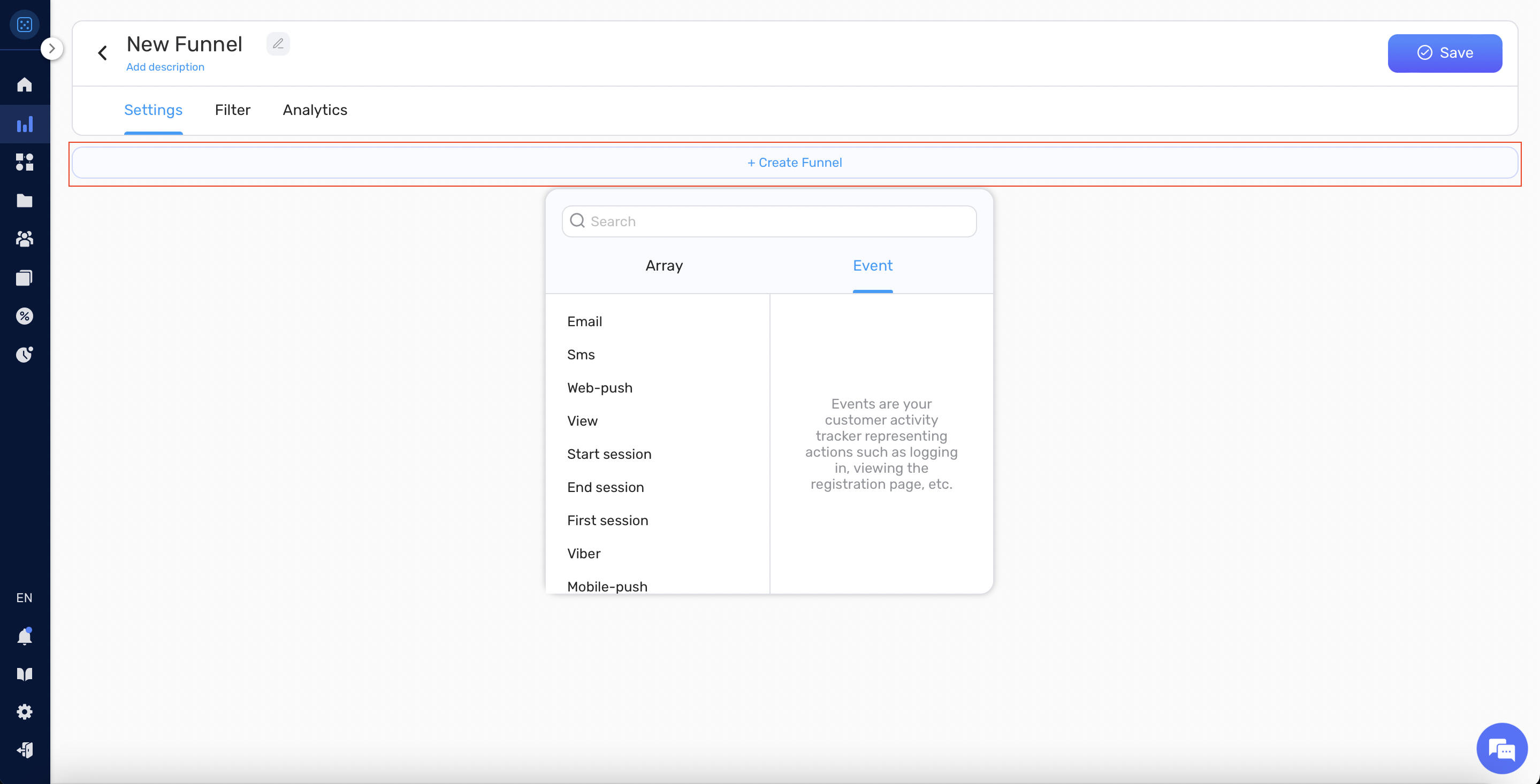
4. Press the “Add funnel step” button to add additional steps to your funnel.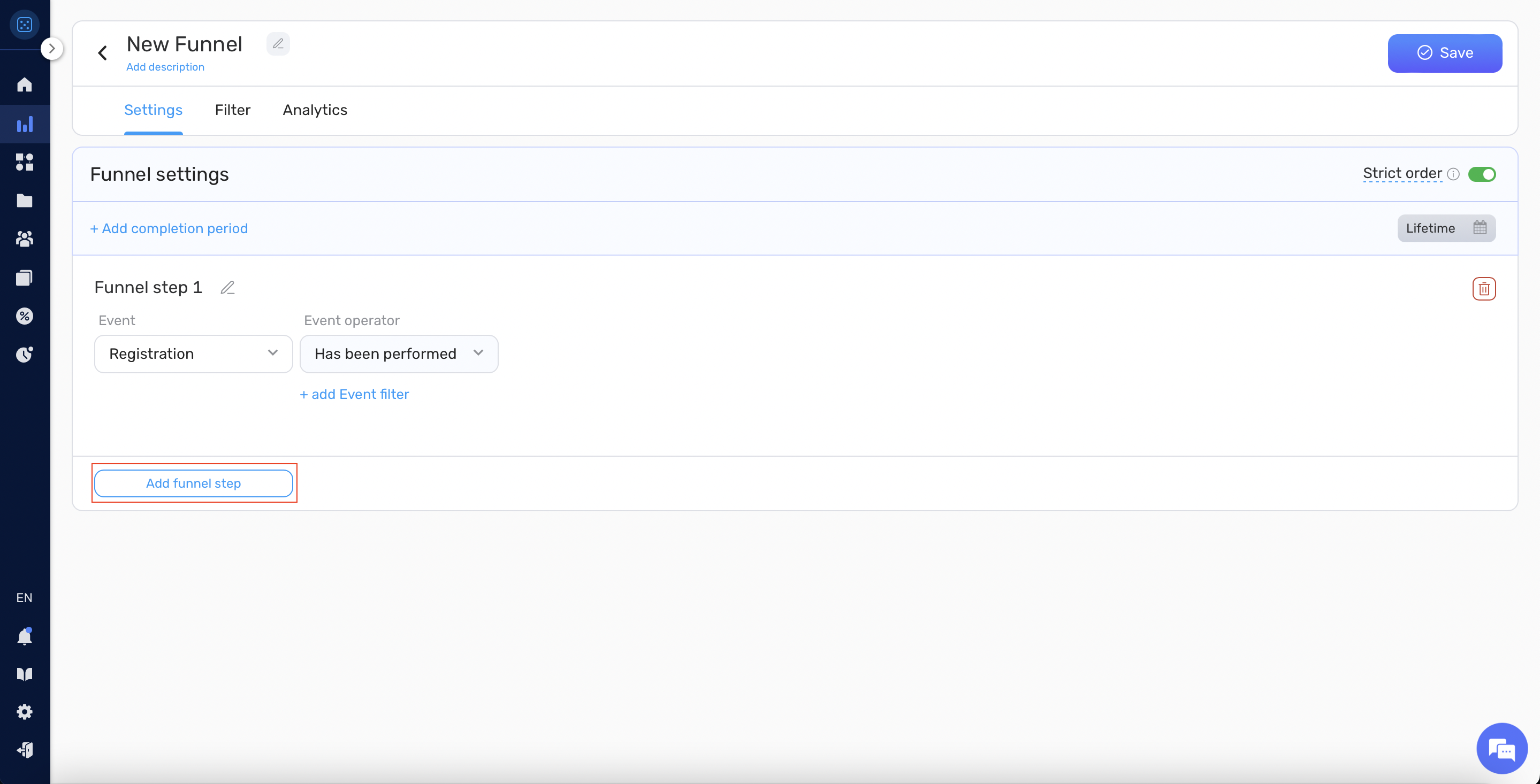
5. You can set a completion period by pressing the “+add completion period” button. This allows you to analyze the funnel by specifying a time frame within which a user should ideally exit the funnel after performing the last step. Note: if you create a funnel based on an array, you need to specify the array field, representing the date and time when the funnel step occurred.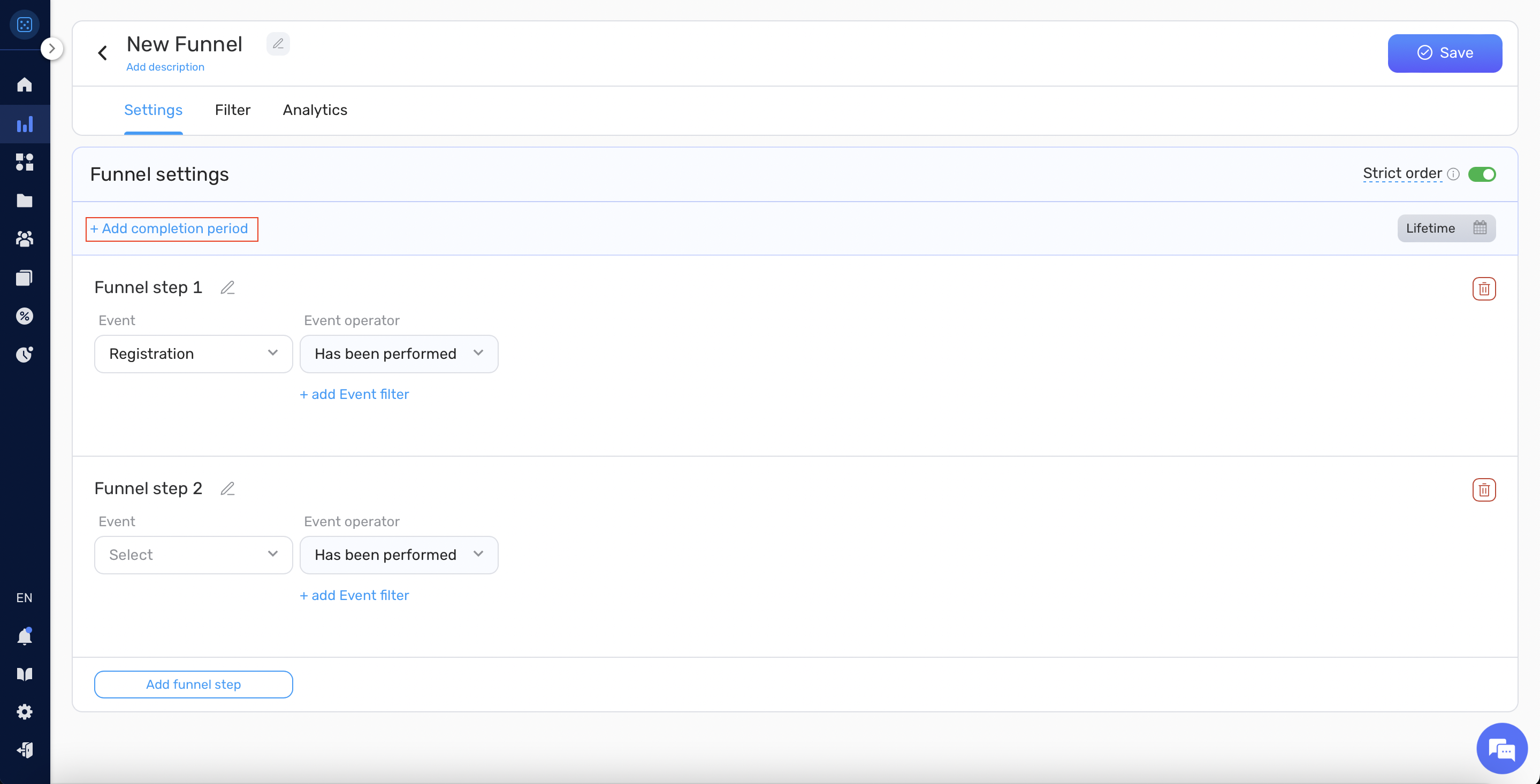
6. To set the desired time period within which the first step of the funnel has occurred, press the “Calendar” button. Note: if you create a funnel based on an array, you need to specify the array field, representing the date and time when the funnel step occurred.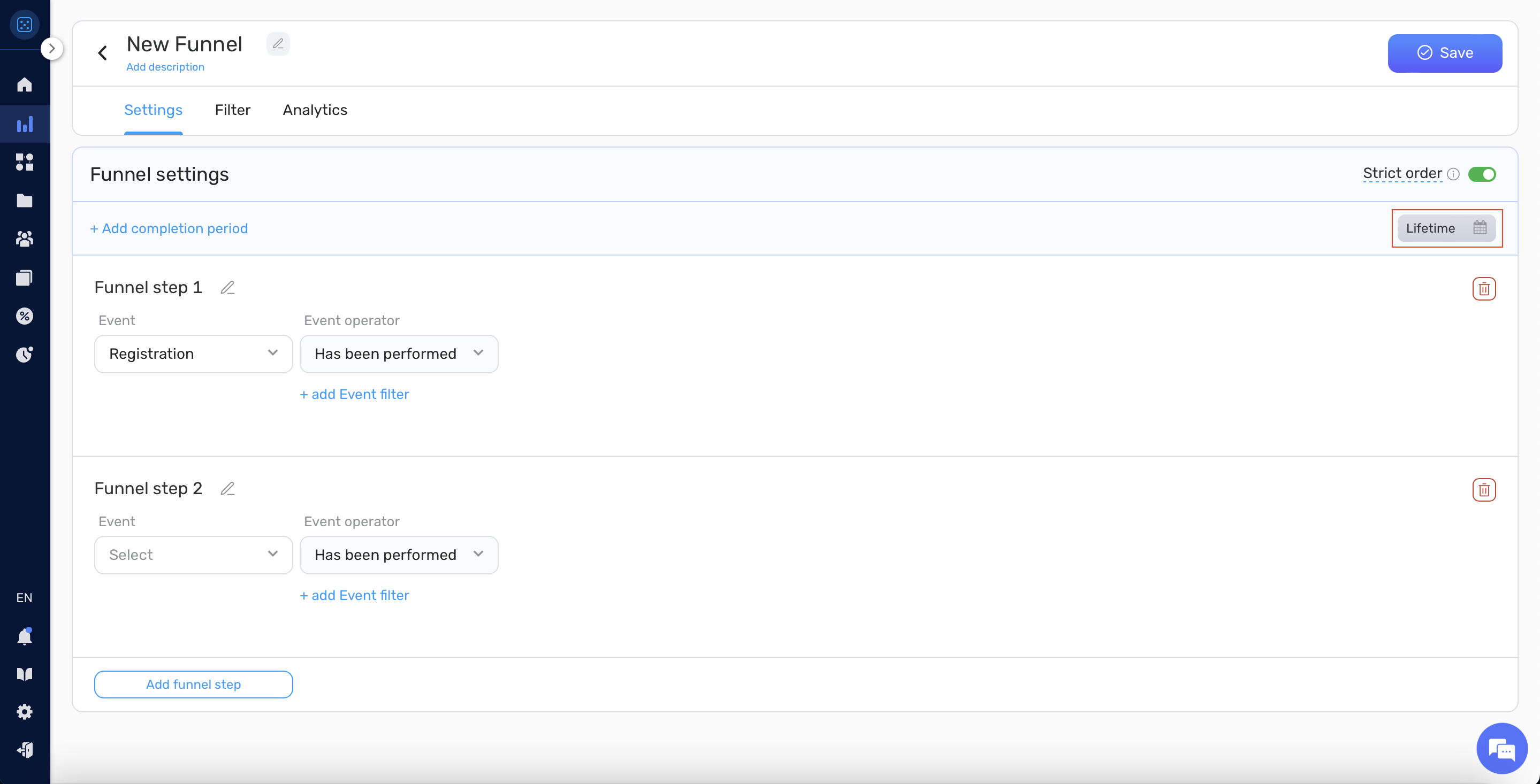
7. If you want to require that customers complete the funnel steps in strict order, you can enable the strict order toggle. With this option enabled, users will not be able to perform other actions (events) between funnel steps.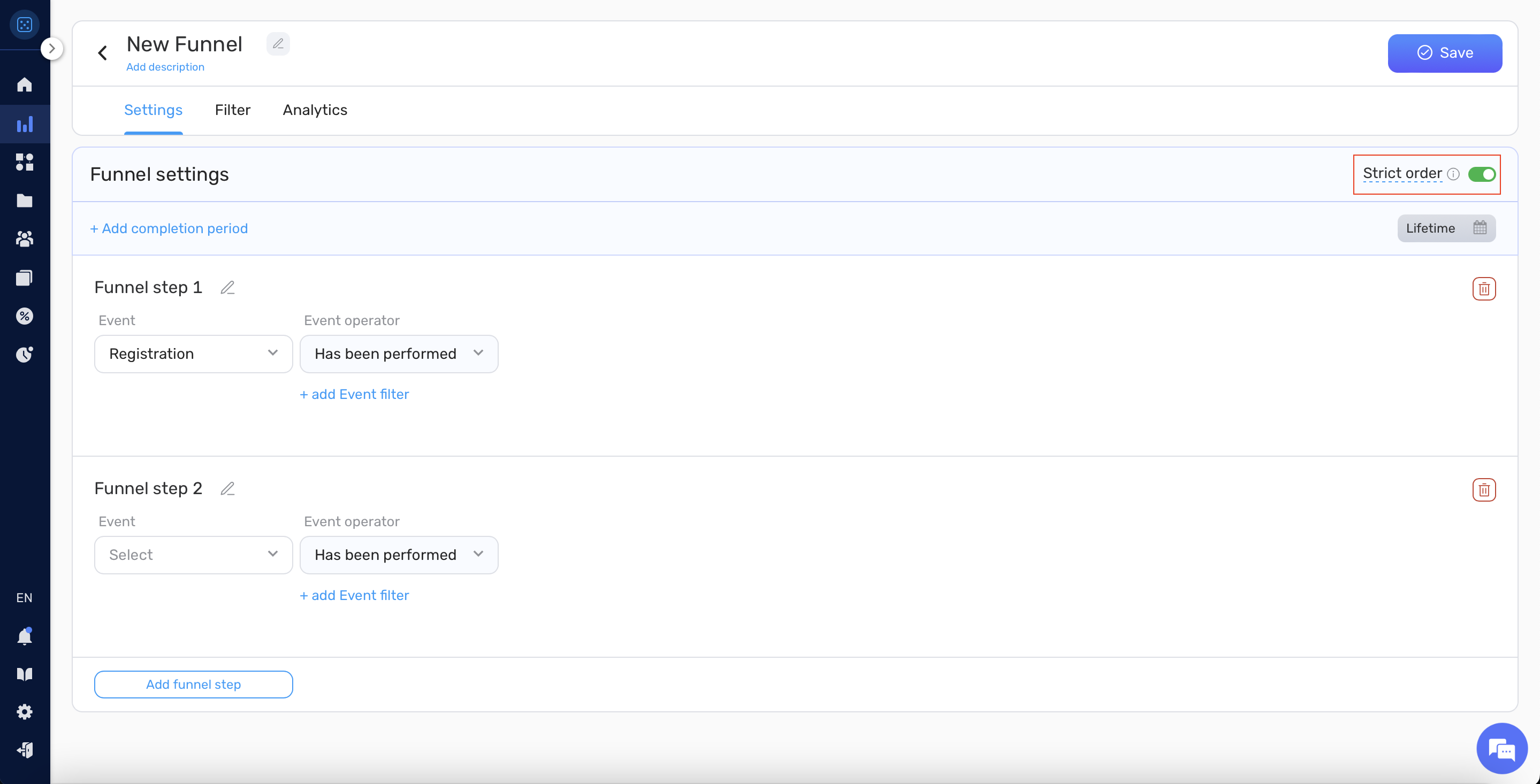
8. To save the created funnel, press the “Save” button in the top right corner.
Filtering Customers in the Funnel #
If you do not want to include all customers from your database in the funnel, you can filter a specific group of them. To do that, follow these steps:
1. Go to the Filter tab.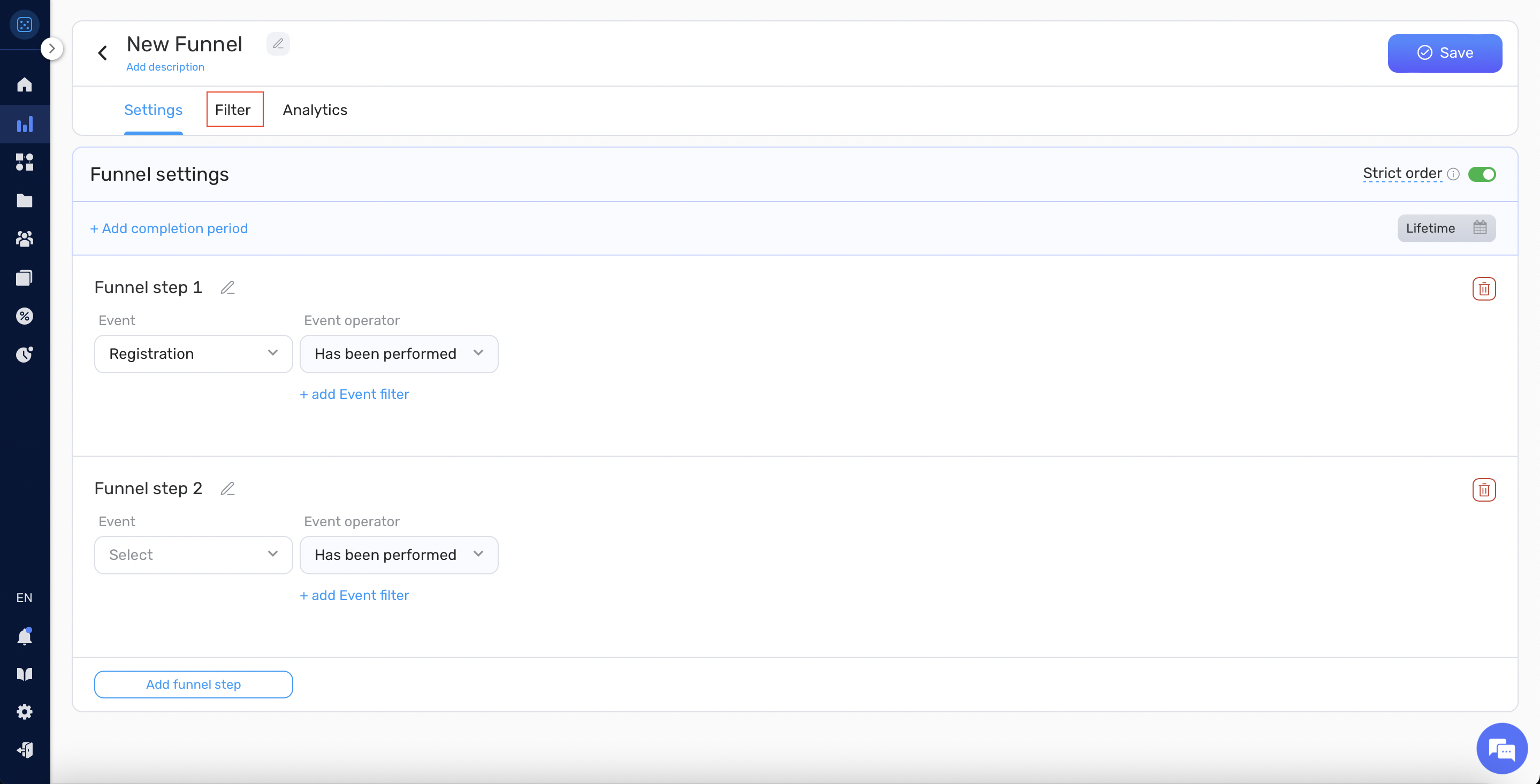
2. Here, you will have two options: + Add filter or + Select existing segment.
3. If you choose the +Add filter option, you can create a new filter, the same as upon creating Segments (Segments & Funnels).
4. If you choose +Select existing segment, you’ll be able to choose from the list of the created segments, and only customers from the chosen segment will be included in the funnel.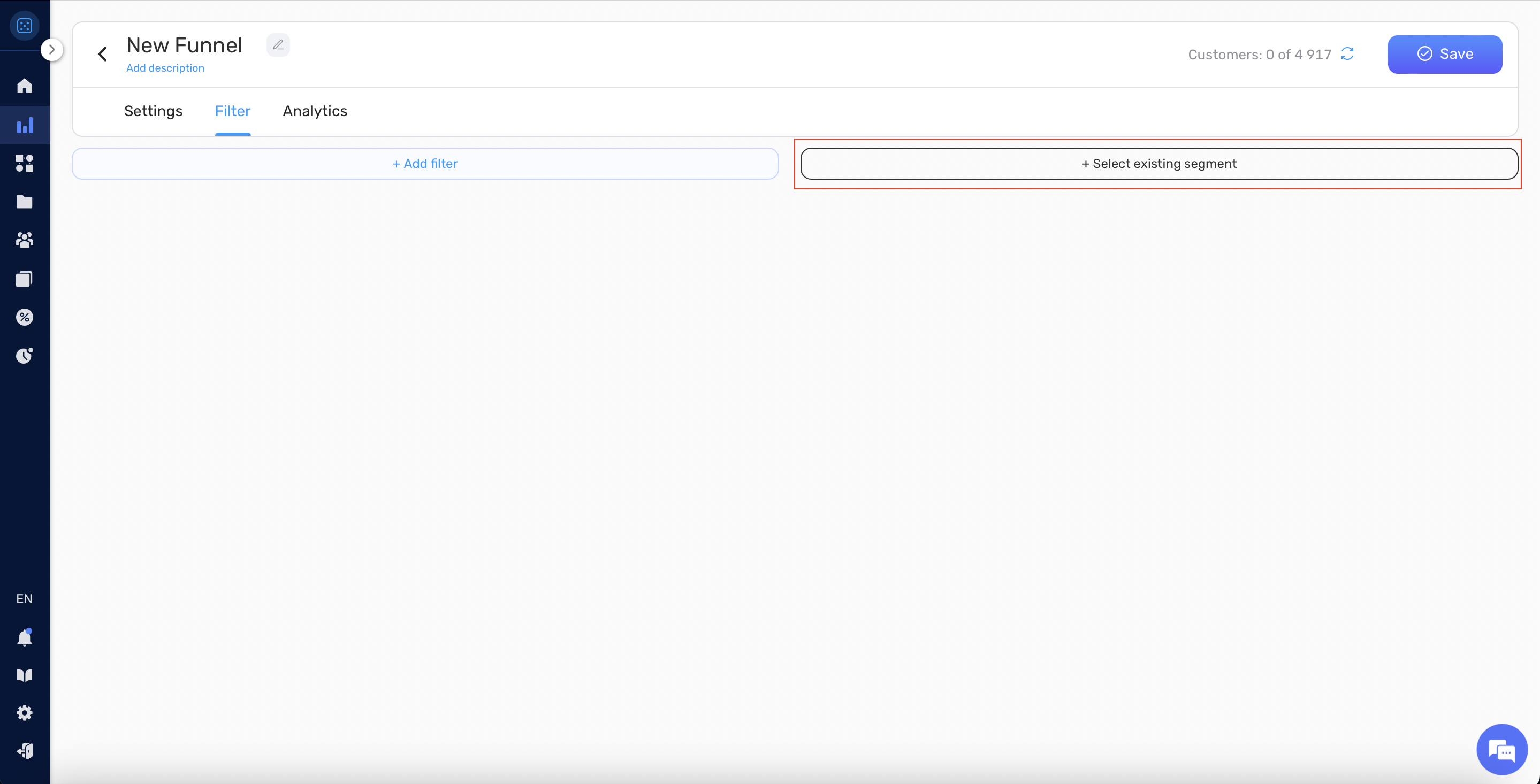
Viewing Funnel Analytics #
To view funnel analytics, go to the Analytics tab. Here, you will see three tabs: Conversion, Funnel Trend, and Time to Convert.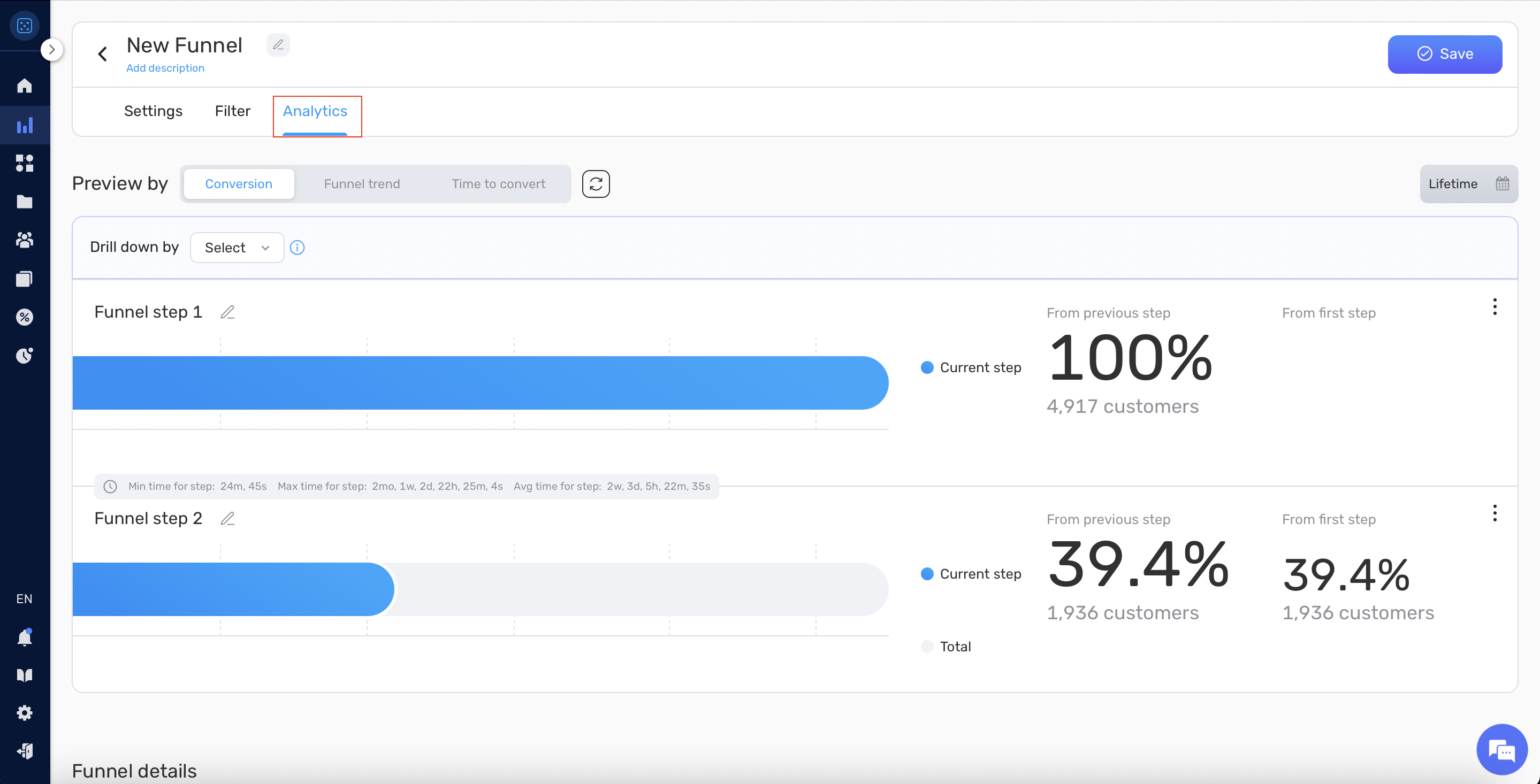
Conversion Tab #
On the Conversion tab, you will be able to see the conversion from each step of the funnel to another.
- You can also drill down the conversion by a specific customer field by choosing this field in the drill-down selector.
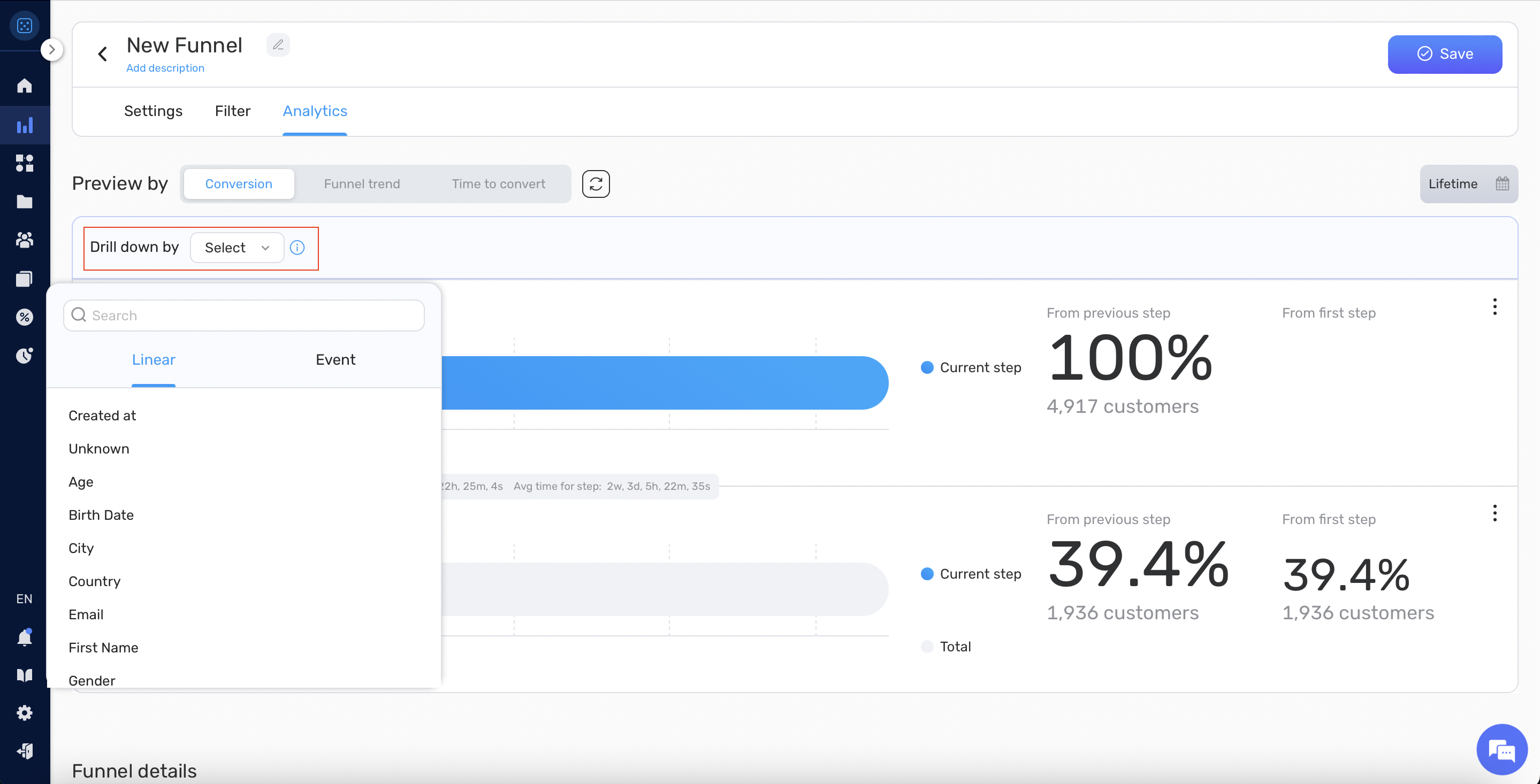
- To specify the conversion analytics time interval, press the “Calendar” button.
Funnel Trend Tab #
On the Funnel Trend tab, you will see a line chart representing the conversion rate for each funnel step daily.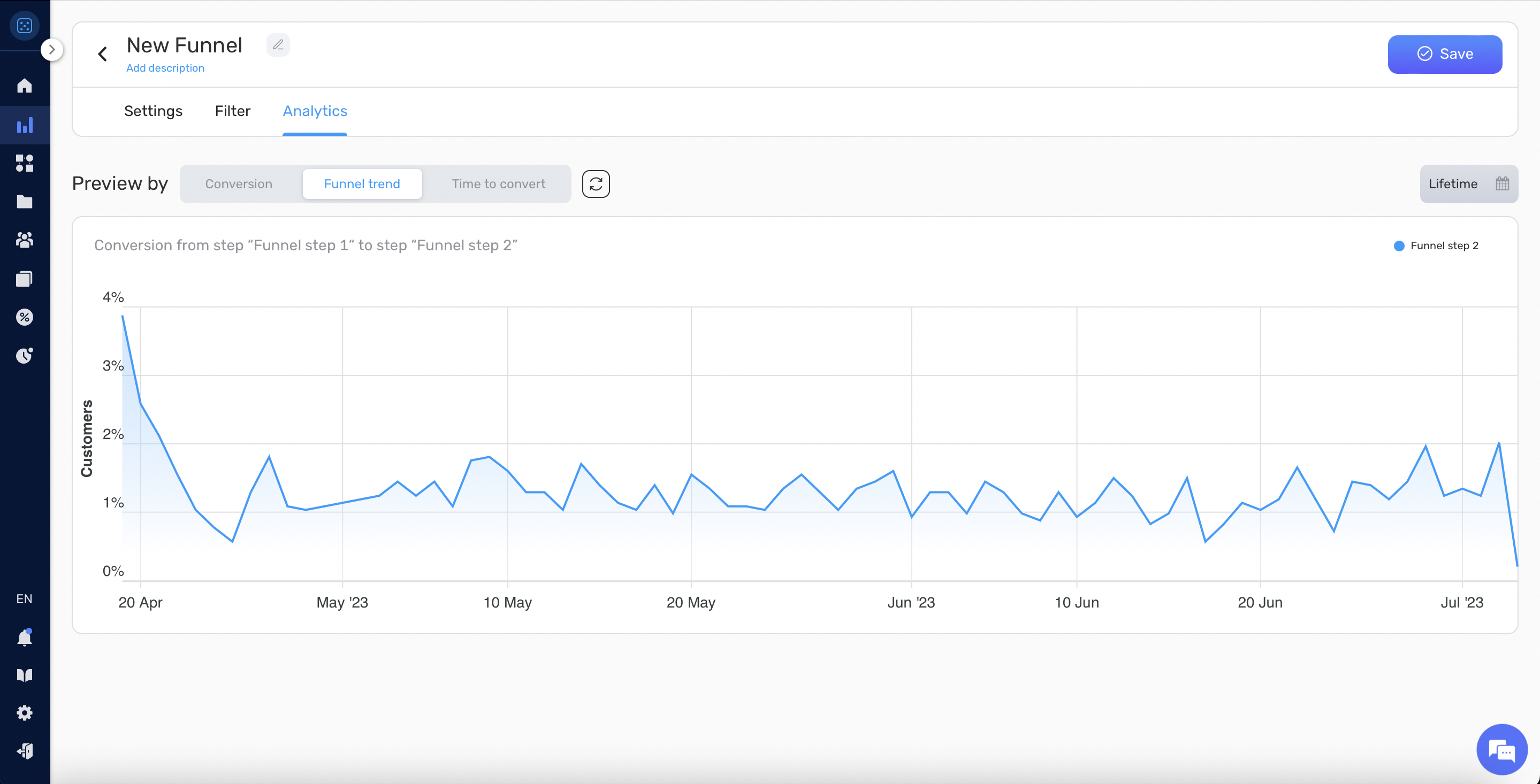
Time to Convert Tab #
On the Time to Convert tab, you can see a bar chart that shows the distribution for the time customers took to convert to each of the funnel steps. You can also choose the distribution range by selecting it in the top left corner of the chart.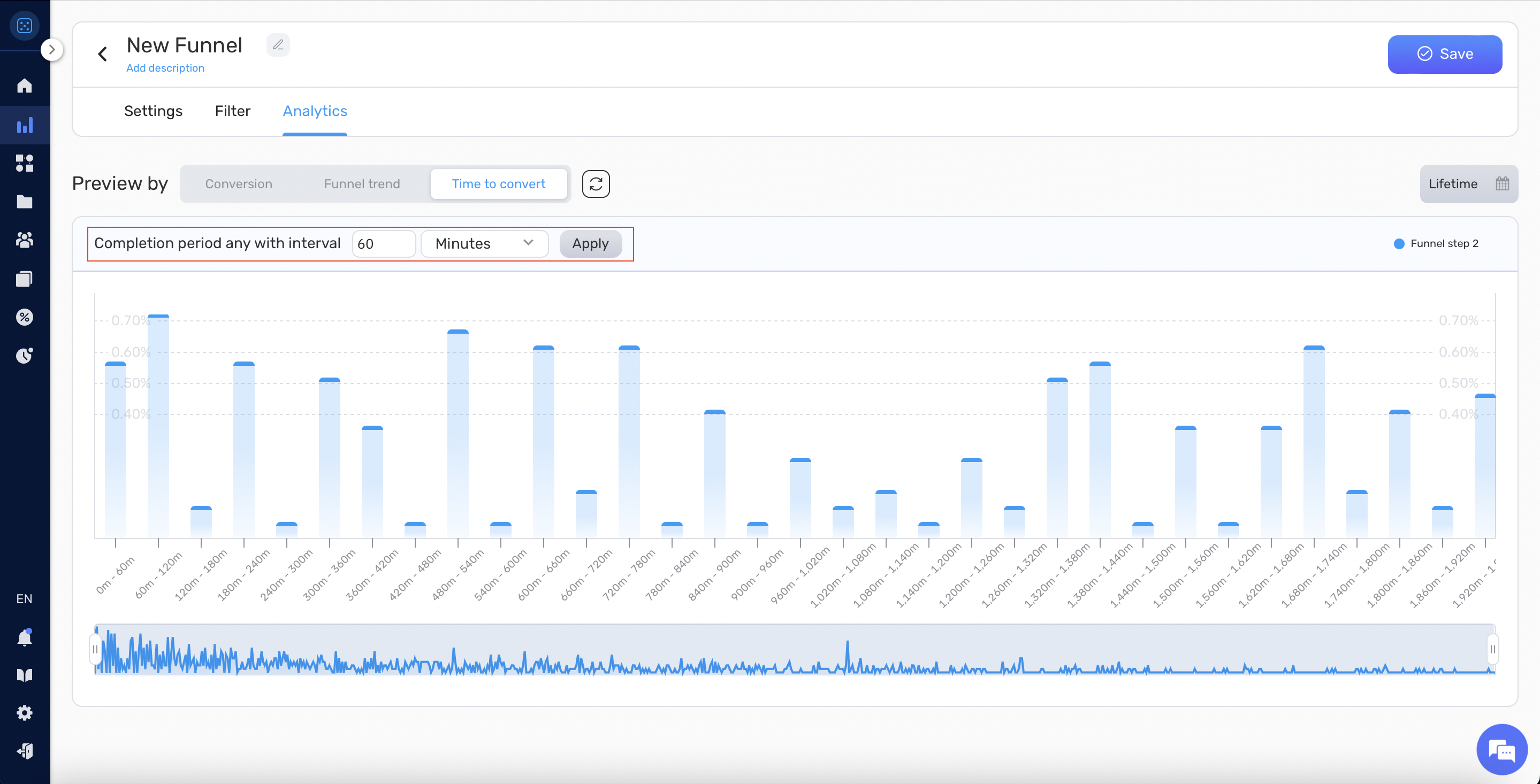
Conclusion #
Retainly’s Funnel Analytics is a powerful tool that allows you to track and analyze the customer journey through different stages in your marketing campaign or application. You can gain deep insights into customer behavior by creating custom funnels, filtering specific customer groups, and using analytical features. This knowledge can be instrumental in optimizing your strategies, improving user experience, and ultimately driving higher conversion rates and business growth. It’s essential to frequently monitor and analyze the funnels to stay up-to-date with the trends and make data-driven decisions. Happy Analyzing!


